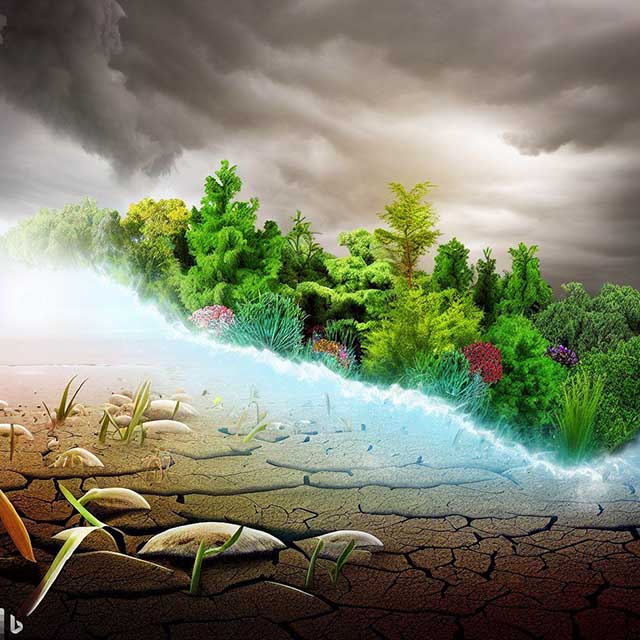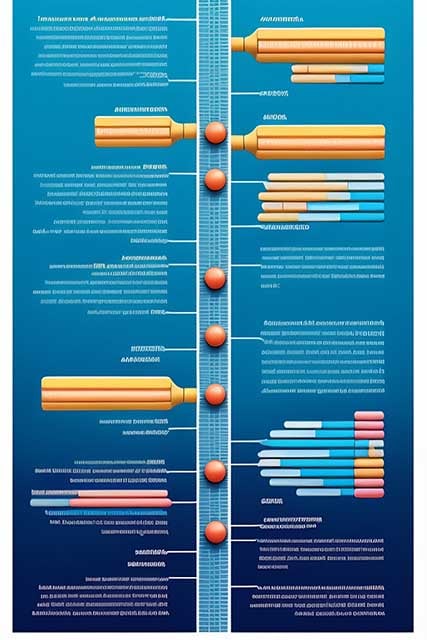Contents
- Introduction: Biodiversity Net Gain (BNG)
- The Importance of Biodiversity Net Gain
- The Legal Framework for Biodiversity Net Gain
- The Journey Towards Biodiversity Net Gain
- The Five Stages of Biodiversity Net Gain
- Understanding the Current State of Biodiversity
- Identifying Opportunities for Biodiversity Net Gain
- Developing a Biodiversity Net Gain Strategy
- Implementing the Biodiversity Net Gain Strategy
- Monitoring and Reporting on Biodiversity Net Gain Outcomes
- Conclusion: The Benefits of Biodiversity Net Gain
Biodiversity Net Gain: A Journey Towards a Better Environment
 Biodiversity Net Gain (BNG) is a crucial approach to development and land management that aims to leave the natural environment in a better state than it was before. The decline in the average abundance of wildlife in the UK since the 1970s has been alarming, despite legislation and policy to protect biodiversity and wildlife.
Biodiversity Net Gain (BNG) is a crucial approach to development and land management that aims to leave the natural environment in a better state than it was before. The decline in the average abundance of wildlife in the UK since the 1970s has been alarming, despite legislation and policy to protect biodiversity and wildlife.
BNG aims to create new habitats as well as enhance the value of existing habitats, and it links to a range of agendas for local authorities, including addressing the climate emergency, place-making, green infrastructure, access to green space and nature, mental and physical health and wellbeing, flood resilience, and improving air quality.
The Importance of Biodiversity Net Gain
Biodiversity is essential for the functioning of ecosystems and the provision of ecosystem services that support human well-being. The loss of biodiversity can have significant negative impacts on the environment, including reduced soil fertility, increased soil erosion, reduced water quality, and reduced carbon sequestration. BNG aims to address these issues by creating new habitats and enhancing existing ones, which can help to support biodiversity and ecosystem services.
The Legal Framework for Biodiversity Net Gain
 The Environment Act 2021 makes BNG mandatory for all planning permissions granted in England from an as-yet unconfirmed date in November 2023. BNG will be measured using Defra's biodiversity metric, and habitats will need to be secured for at least 30 years. Local authorities should start thinking about BNG now because there is a lot of preparation required to get ready for the new legal requirements, including planning decision-making and policy.
The Environment Act 2021 makes BNG mandatory for all planning permissions granted in England from an as-yet unconfirmed date in November 2023. BNG will be measured using Defra's biodiversity metric, and habitats will need to be secured for at least 30 years. Local authorities should start thinking about BNG now because there is a lot of preparation required to get ready for the new legal requirements, including planning decision-making and policy.
The Journey Towards Biodiversity Net Gain
BNG is not just about planning, and local authorities can start thinking about how they could join up across council services, declare a climate and ecological emergency, and gather evidence about what they want their borough's natural environment to look like and how it can deliver for local people. BNG will involve local communities, landowners, and farmers, especially where delivery of BNG happens off the development site. Defra and Natural England are developing policy and secondary legislation on BNG, so local authorities can test approaches and feed in experience if they start doing BNG now.
Local authorities should plan for and deliver BNG as a 'journey.' The journey towards BNG will involve a range of stakeholders, including developers, planners, ecologists, and local communities. It will require a collaborative approach, with everyone working together to achieve the best outcomes for biodiversity and the environment.
The Five Stages of Biodiversity Net Gain
The journey towards BNG will involve several stages, including:
- Understanding the current state of biodiversity in the local area
- Identifying opportunities for BNG
- Developing a BNG strategy
- Implementing the BNG strategy
- Monitoring and reporting on BNG outcomes
Understanding the Current State of Biodiversity
Local authorities should start by understanding the current state of biodiversity in their area. This will involve gathering data on habitats, species, and ecosystems. Local authorities can work with ecologists and other experts to carry out surveys and assessments to identify areas of high biodiversity value and areas that are at risk.
Identifying Opportunities for Biodiversity Net Gain
Once local authorities have a good understanding of the current state of biodiversity in their area, they can start identifying opportunities for BNG. This will involve looking at development proposals and identifying ways to enhance biodiversity as part of the development. Local authorities can also look at opportunities for BNG off-site, such as through habitat creation or restoration projects.
Developing a Biodiversity Net Gain Strategy
Developing a BNG strategy is the next step. This will involve setting out the local authority's vision for BNG and identifying the actions that need to be taken to achieve this vision. The strategy should be based on the best available evidence and should be developed in collaboration with stakeholders.
Implementing the Biodiversity Net Gain Strategy
Implementing the BNG strategy will involve working with developers and other stakeholders to ensure that BNG is delivered as part of development projects. This will require close collaboration between planners, ecologists, and developers to ensure that BNG is integrated into the development process.
Monitoring and Reporting on Biodiversity Net Gain Outcomes
Monitoring and reporting on BNG outcomes is essential to ensure that the BNG strategy is delivering the desired outcomes. Local authorities should set up monitoring programs to track the progress of BNG and report on the outcomes to stakeholders.
Conclusion: Biodiversity Net Gain
Biodiversity Net Gain (BNG) is a vital approach to development and land management that aims to enhance and protect the natural environment. The decline in wildlife abundance in the UK has been alarming, and BNG aims to address this issue by creating new habitats and enhancing existing ones. The legal framework for BNG will make it mandatory for all planning permissions granted in England from November 2023. The journey towards BNG will involve a collaborative approach, with stakeholders working together to achieve the best outcomes for biodiversity and the environment. Local authorities should start thinking about BNG now and plan for and deliver BNG as a 'journey.' By doing so, they can help to create a better environment for future generations.
FAQ
1. What is Biodiversity Net Gain (BNG)?
Biodiversity Net Gain (BNG) is an approach to development and land management that aims to leave the natural environment in a better state than it was before. It involves creating new habitats and enhancing existing ones to support biodiversity and ecosystem services.
2. Why is Biodiversity Net Gain important?
Biodiversity is essential for the functioning of ecosystems and the provision of ecosystem services that support human well-being. The loss of biodiversity can have significant negative impacts on the environment, including reduced soil fertility, increased soil erosion, reduced water quality, and reduced carbon sequestration. BNG aims to address these issues by creating new habitats and enhancing existing ones.
3. What is the legal framework for Biodiversity Net Gain?
The Environment Act 2021 makes BNG mandatory for all planning permissions granted in England from an as-yet unconfirmed date in November 2023. BNG will be measured using Defra's biodiversity metric, and habitats will need to be secured for at least 30 years.
4. What are the five stages of Biodiversity Net Gain?
The journey towards BNG will involve several stages, including: understanding the current state of biodiversity in the local area, identifying opportunities for BNG, developing a BNG strategy, implementing the BNG strategy, and monitoring and reporting on BNG outcomes.
5. How can local authorities start planning for Biodiversity Net Gain?
Local authorities can start by understanding the current state of biodiversity in their area, identifying opportunities for BNG, and developing a BNG strategy. They can work with ecologists and other experts to carry out surveys and assessments to identify areas of high biodiversity value and areas that are at risk. They can also collaborate with stakeholders, including developers, planners, and local communities, to achieve the best outcomes for biodiversity and the environment.



